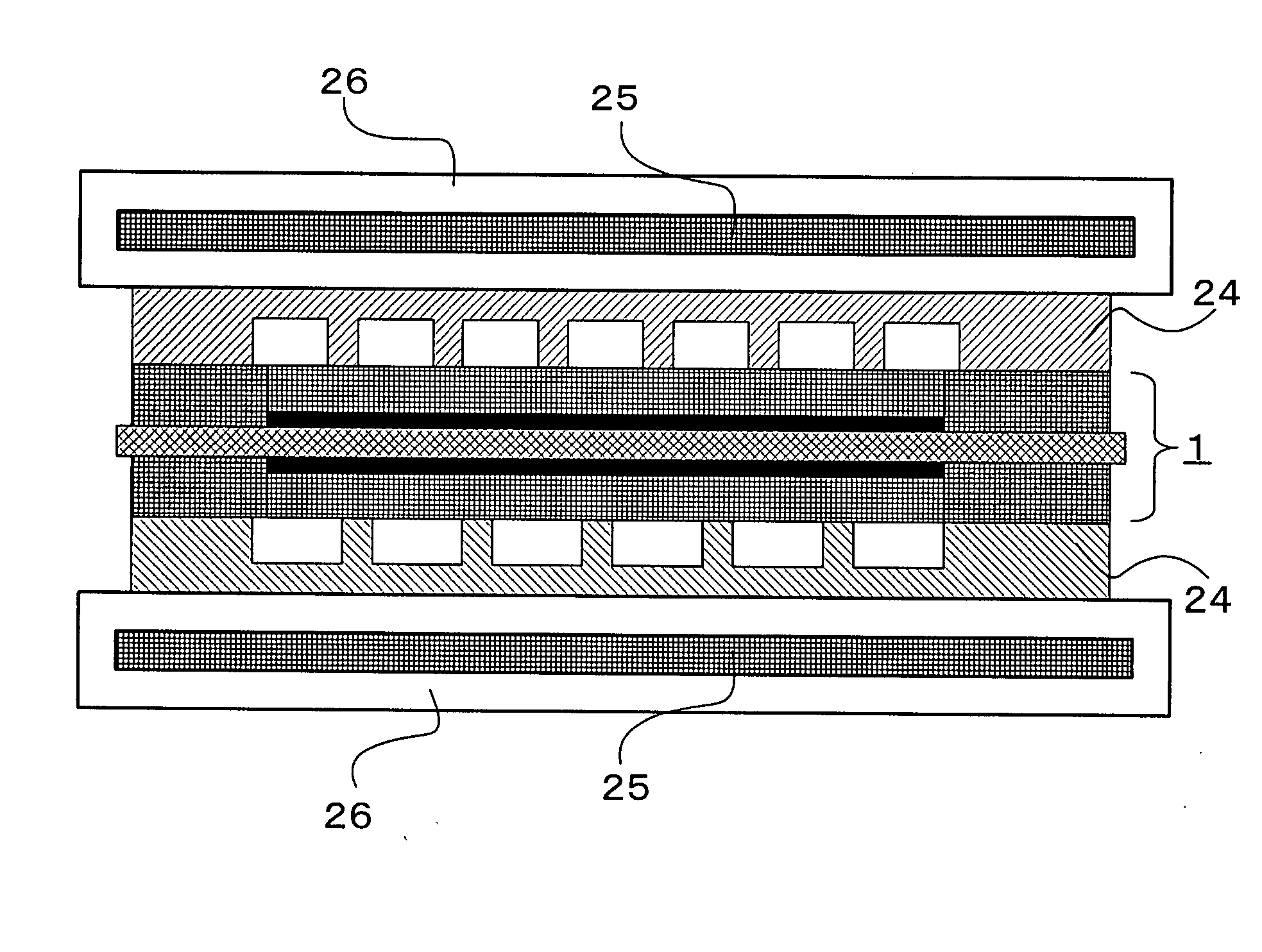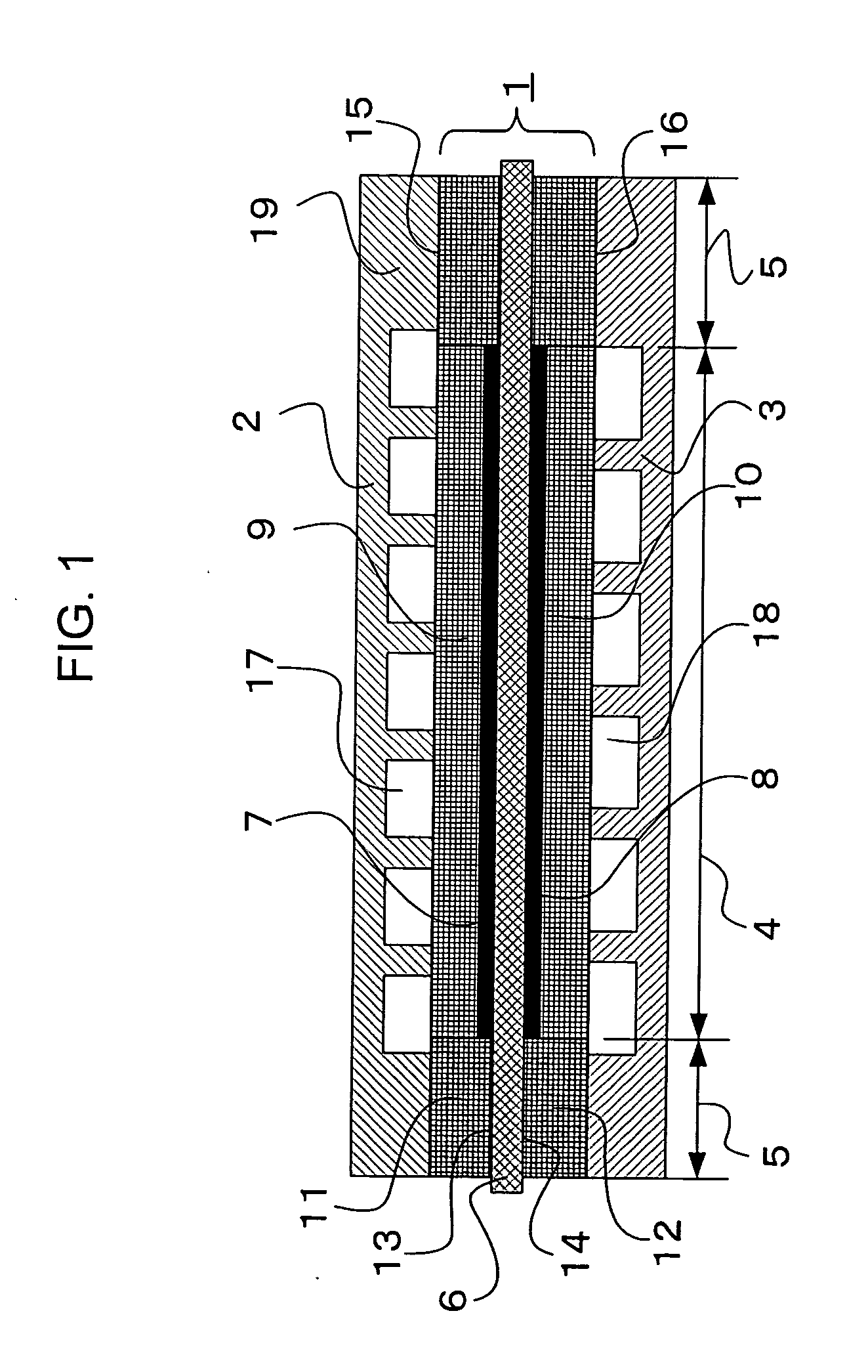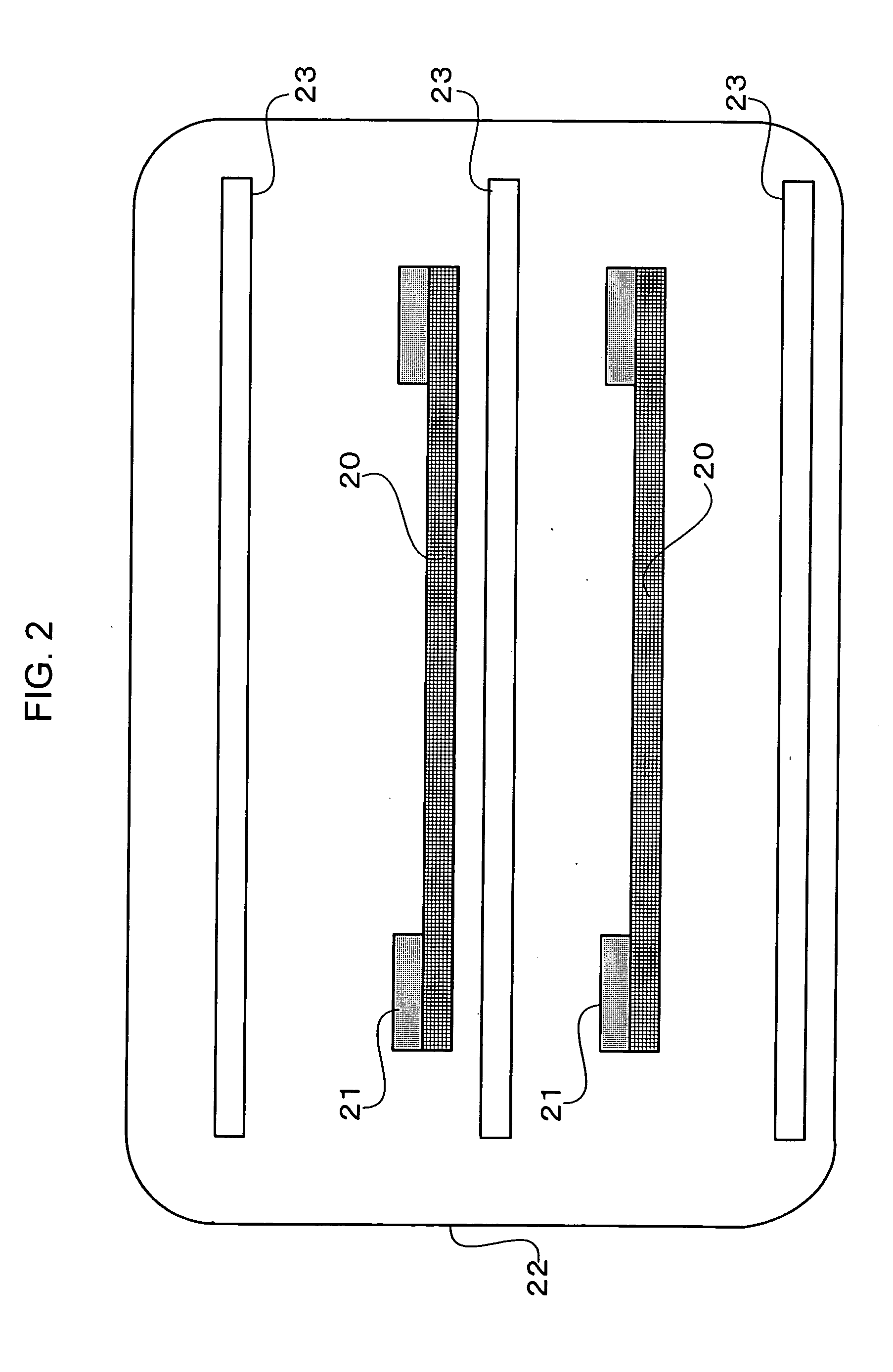Fuel cell and method for manufacture thereof
a fuel cell and fuel cell technology, applied in the field of fuel cells, can solve the problems of increasing the risk of damage to the electrolyte membrane, affecting the service life of the cell, so as to prevent prolong the service life, and prevent the effect of local deformation and concentration
- Summary
- Abstract
- Description
- Claims
- Application Information
AI Technical Summary
Benefits of technology
Problems solved by technology
Method used
Image
Examples
embodiment 1
[0041]FIG. 1 is a cross-sectional schematic diagram of a solid polymer fuel cell according to Embodiment 1 of the present invention.
[0042] A single cell of this solid polymer fuel cell (hereinafter “fuel cell”) has: a membrane electrode composite body 1; and an electrically-conductive oxidizer separator plate 2 and an electrically-conductive fuel separator plate 3, together holding the membrane electrode composite body 1 from two sides. The membrane electrode composite body 1 has: a power generating portion 4 for generating electric power by ionizing into protons hydrogen functioning as a fuel, conducting the protons as ions, and oxidizing the protons with oxygen functioning as an oxidizer; and a sealing portion 5 surrounding a perimeter of the power generating portion 4 to seal off the fuel and the oxidizer.
[0043] The membrane electrode composite body 1 has: a proton-conductive solid polymer electrolyte membrane (hereinafter “electrolyte membrane”) 6 spreading over an entire surf...
##ventive example 1
INVENTIVE EXAMPLE 1
[0078] Next, Inventive Example 1 of the fuel cell according to the present invention will be explained. The construction of single cells in the fuel cells of Inventive Example 1 is similar to that in FIG. 1.
[0079] First, square electrode substrate plate 20 having 90 mm to a side were prepared from a carbon paper having a thickness of 300 μm (TGP-H-90 manufactured by Toray Industries, Inc.). The porosity of this carbon paper was approximately 78 percent. Frame-shaped resin sheets 21 having a square external shape having 90 mm to a side and having a square aperture having 54 mm to a side opened in a central portion were cut out of a resin film having a thickness of 257 μm. As shown in FIG. 2, an oxidizer electrode substrate 9 and a fuel electrode substrate 10 in which an oxidizer-sealing support portion 11 and a fuel-sealing support portion 12 were disposed were produced by stacking these resin sheets 21 with the electrode substrate plates 20, setting them between ...
##ventive example 2
INVENTIVE EXAMPLE 2
[0102]FIG. 7 is a cross section of a single cell of a fuel cell according to Inventive Example 2 of the present invention. In this single cell, a membrane electrode composite body 1 was formed in a similar manner to that of Inventive Example 1. This membrane electrode composite body 1 was subsequently sandwiched between an electrically-conductive oxidizer separator plate 2 and an electrically-conductive fuel separator plate 3 in which gas channels were disposed to form a single cell stacked body. Hot-pressing was applied to this single cell stacked body for two minutes at a temperature of 120 degrees Celsius and a pressure of 49 N / cm2. By this process, thermoplastic resin filling an oxidizer-sealing support portion 11 and a fuel-sealing support portion 12 was re-softened, bonding the electrically-conductive oxidizer separator plate 2 and the electrically-conductive fuel separator plate 3 with the membrane electrode composite body 1 to produce the single cell.
[010...
PUM
| Property | Measurement | Unit |
|---|---|---|
| width | aaaaa | aaaaa |
| volume percent | aaaaa | aaaaa |
| width | aaaaa | aaaaa |
Abstract
Description
Claims
Application Information
 Login to View More
Login to View More - R&D
- Intellectual Property
- Life Sciences
- Materials
- Tech Scout
- Unparalleled Data Quality
- Higher Quality Content
- 60% Fewer Hallucinations
Browse by: Latest US Patents, China's latest patents, Technical Efficacy Thesaurus, Application Domain, Technology Topic, Popular Technical Reports.
© 2025 PatSnap. All rights reserved.Legal|Privacy policy|Modern Slavery Act Transparency Statement|Sitemap|About US| Contact US: help@patsnap.com



